DASYATIDAE
Stingrays
By Seishi Kimura
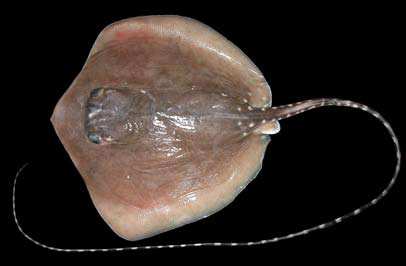 Himantura gerrardi |
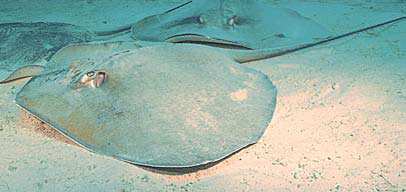 Himantura jenkinsii |
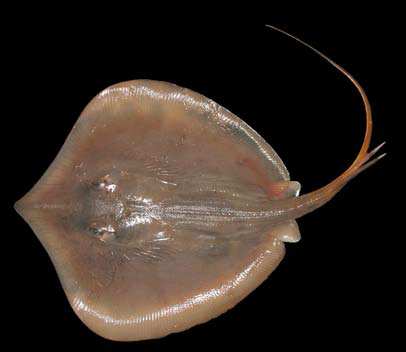 Himantura walga |
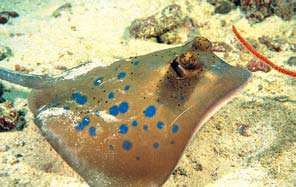 Neotrygon kuhlii |
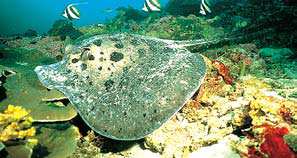 Taeniura meyeni |
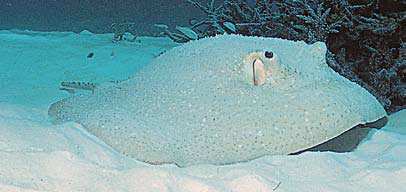 Urogymnus asperrimus |
|
Medium to large sized batoid rays (0.4-5 m in total length, ca. 0.2-2 m in disc width). Head, trunk, and greatly enlarged pectoral fins fully fused to form a strongly flattened circular, oval, or rhomboidal disc; tail elongated, whip-like. Head not projecting from disc; eyes and spiracles on the dorsal surface of disc. Five pairs of gill openings located on ventral side of disc. Usually denticles, thorns (small spines), and/or tubercles present on dorsal surface of body disc and tail in adults. In most species, tail with 1-4 stout venomous barbed spines on dorsum. Color: body grayish or brownish dorsally, paler ventrally in most species; in a few species with bluish, blackish, or whitish spots, rings, or reticulations. Similar families occurring in the area. Dasyatidae is distinguished from the following similar families in having an elongated whip-like tail (usually longer than disc width) and no dorsal or caudal fins. Torpedinidae and Narcinidae: stout tail with dorsal and caudal fins. Rajidae: tail with dorsal and/or caudal fins. Urolophidae: tail with fan-like caudal fin. Gymnuridae: disc extremely broad (more than 1.5 times as broad as long), tail very short (shorter than 1/2 disc width). Myliobatidae: head projecting from disc; eyes and spiracles laterally on head. Remarks. Occurring in tropical to temperate marine, estuarine and freshwater areas, usually found in shallow coastal waters. Viviparous; feed mostly on benthic animals. |

|
|